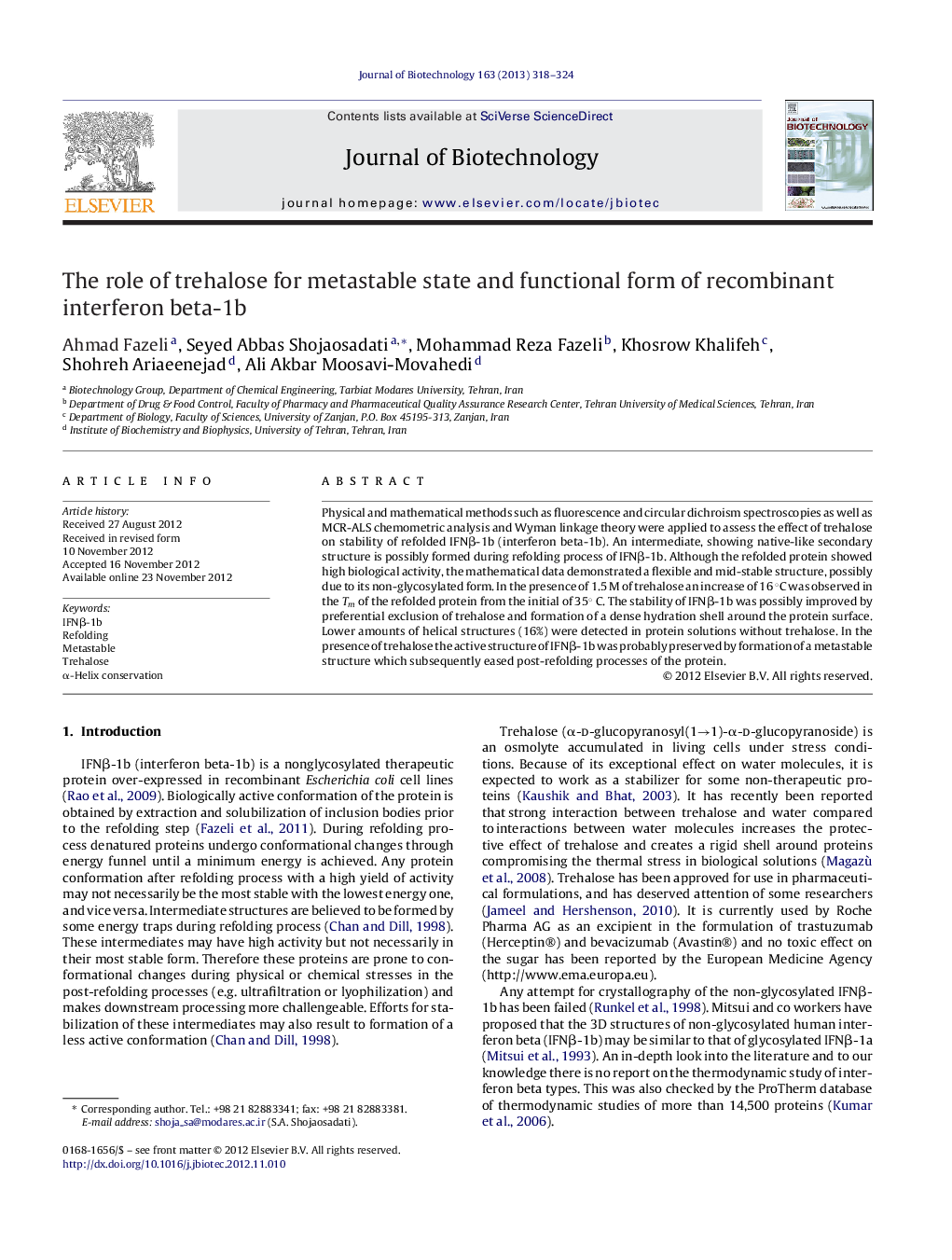| Article ID | Journal | Published Year | Pages | File Type |
|---|---|---|---|---|
| 23603 | Journal of Biotechnology | 2013 | 7 Pages |
Physical and mathematical methods such as fluorescence and circular dichroism spectroscopies as well as MCR-ALS chemometric analysis and Wyman linkage theory were applied to assess the effect of trehalose on stability of refolded IFNβ-1b (interferon beta-1b). An intermediate, showing native-like secondary structure is possibly formed during refolding process of IFNβ-1b. Although the refolded protein showed high biological activity, the mathematical data demonstrated a flexible and mid-stable structure, possibly due to its non-glycosylated form. In the presence of 1.5 M of trehalose an increase of 16 °C was observed in the Tm of the refolded protein from the initial of 35° C. The stability of IFNβ-1b was possibly improved by preferential exclusion of trehalose and formation of a dense hydration shell around the protein surface. Lower amounts of helical structures (16%) were detected in protein solutions without trehalose. In the presence of trehalose the active structure of IFNβ-1b was probably preserved by formation of a metastable structure which subsequently eased post-refolding processes of the protein.
► Interferon beta-1b forms an active unstable intermediate structure during refolding process. ► Trehalose improved the stability of interferon beta-1b with no loss in activity. ► A new meta-stable conformation of interferon beta-1b was formed. ► Lower amounts of helical structures (16%) were detected in protein solutions without trehalose. ► Preferential exclusion was identified to be the mechanism of trehalose stability effect.
